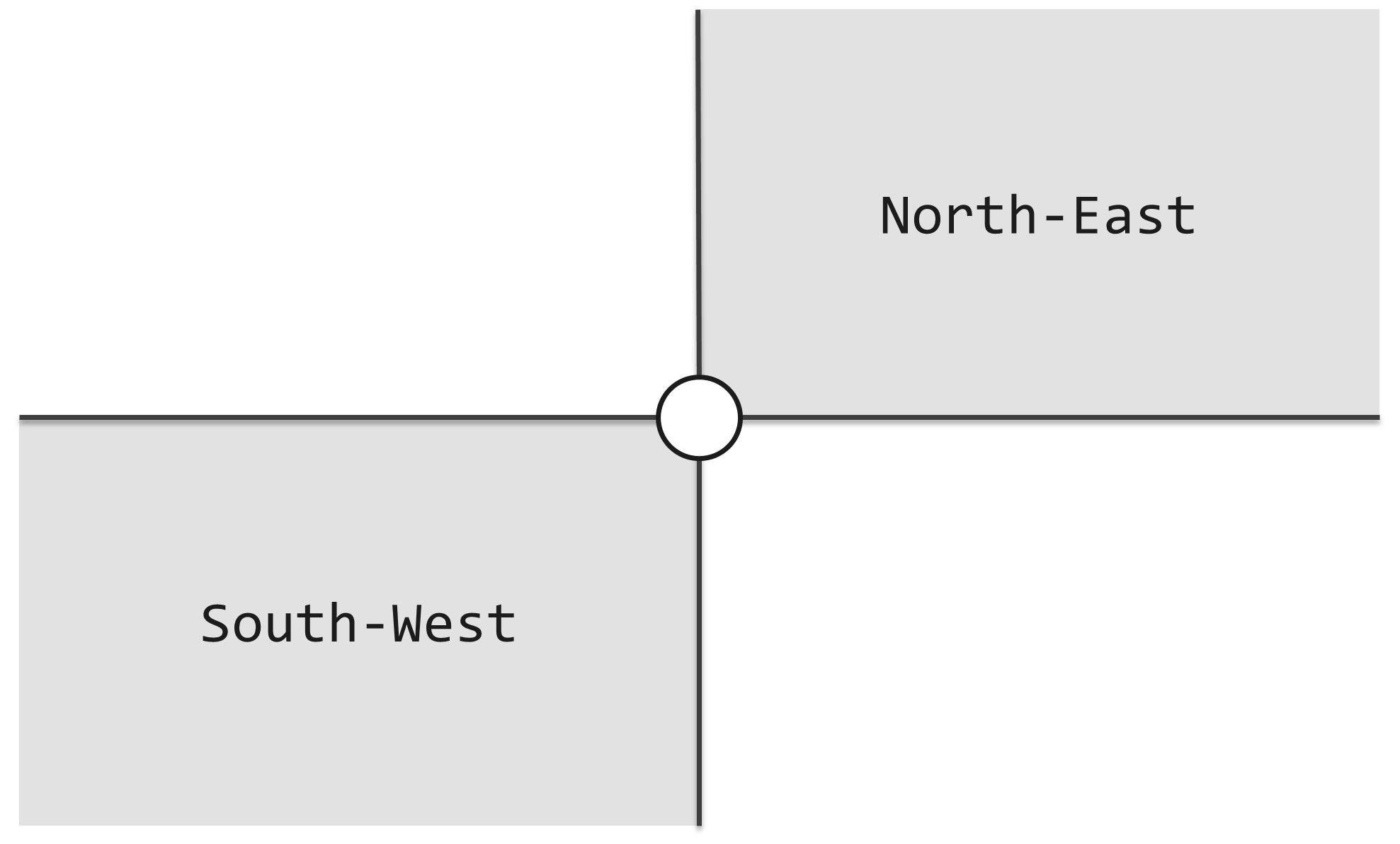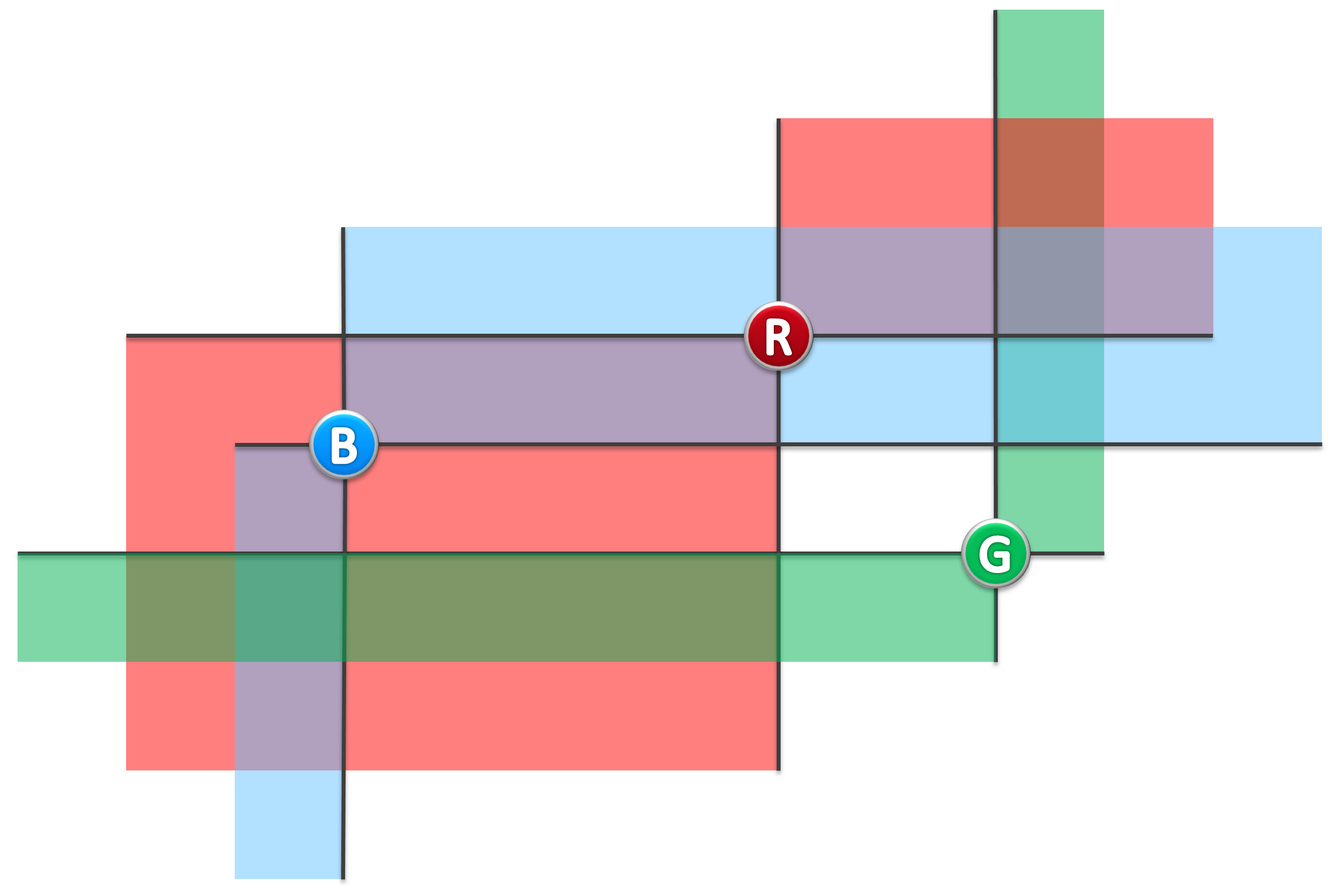灯塔(LightHouse)
灯塔(LightHouse)
Description
As shown in the following figure, If another lighthouse is in gray area, they can beacon each other.

For example, in following figure, (B, R) is a pair of lighthouse which can beacon each other, while (B, G), (R, G) are NOT.

Input
1st line: N
2nd ~ (N + 1)th line: each line is X Y, means a lighthouse is on the point (X, Y).
Output
How many pairs of lighthourses can beacon each other
( For every lighthouses, X coordinates won't be the same , Y coordinates won't be the same )
Example
Input
3
2 2
4 3
5 1
Output
1
Restrictions
For 90% test cases: 1 <= n <= 3 * 105
For 95% test cases: 1 <= n <= 106
For all test cases: 1 <= n <= 4 * 106
For every lighthouses, X coordinates won't be the same , Y coordinates won't be the same.
1 <= x, y <= 10^8
Time: 2 sec
Memory: 256 MB
Hints
The range of int is usually [-231, 231 - 1], it may be too small.
- 原理与要点: 根据题意,一个点可以看见位于其右上方的点。先按照x从小到大,如果x相同就y从小到大的次序排序。显然,排序后的序列中若\(y_j>y_i(j>i)\) ,则i与j两个灯塔可以互相照到。能够互相照到的灯塔对数也就是排序后序列中的顺序对数。用归并排序进行排序,在排序的过程中求顺序对。
- 遇到的问题:无
- 时间和空间复杂度: 时间复杂度\(O(nlogn)\),空间复杂度\(O(n)\)
#include "iostream"
#include "cstdio"
#include "cstring"
using namespace std;
const int SZ = 1<<20; //快速io
struct fastio{
char inbuf[SZ];
char outbuf[SZ];
fastio(){
setvbuf(stdin,inbuf,_IOFBF,SZ);
setvbuf(stdout,outbuf,_IOFBF,SZ);
}
}io;
const int maxn = 4e6 + 100;
typedef long long ll;
struct node {
int x, y;
} a[maxn], b[maxn];
ll ans = 0;
void merge1(int l, int mid, int r) {
if (l == r) return;
merge1(l, (l + mid) >> 1, mid);
merge1(mid + 1, (mid + 1 + r) >> 1, r);
int i = l, j = mid + 1;
for (int k = l; k <= r; k++) {
if (j > r || (i <= mid && (a[i].x < a[j].x || (a[i].x == a[j].x && a[i].y < a[j].y)))) b[k] = a[i++];
else b[k] = a[j++];
}
for (int k = l; k <= r; k++)
a[k] = b[k];
}
void merge2(int l, int mid, int r) {
if (l == r) return;
merge2(l, (l + mid) >> 1, mid);
merge2(mid + 1, (mid + 1 + r) >> 1, r);
int i = l, j = mid + 1;
for (int k = l; k <= r; k++) {
if (j > r || (i <= mid && a[i].y < a[j].y)) b[k] = a[i++], ans += r - j + 1;
else b[k] = a[j++];
}
for (int k = l; k <= r; k++)
a[k] = b[k];
}
int main() {
ll n;
scanf("%lld", &n);
for (int i = 1; i <= n; i++) {
scanf("%d %d", &a[i].x, &a[i].y);
}
merge1(1, (1 + n) >> 1, n);
merge2(1, (1 + n) >> 1, n);
printf("%lld\n", ans);
return 0;
}

